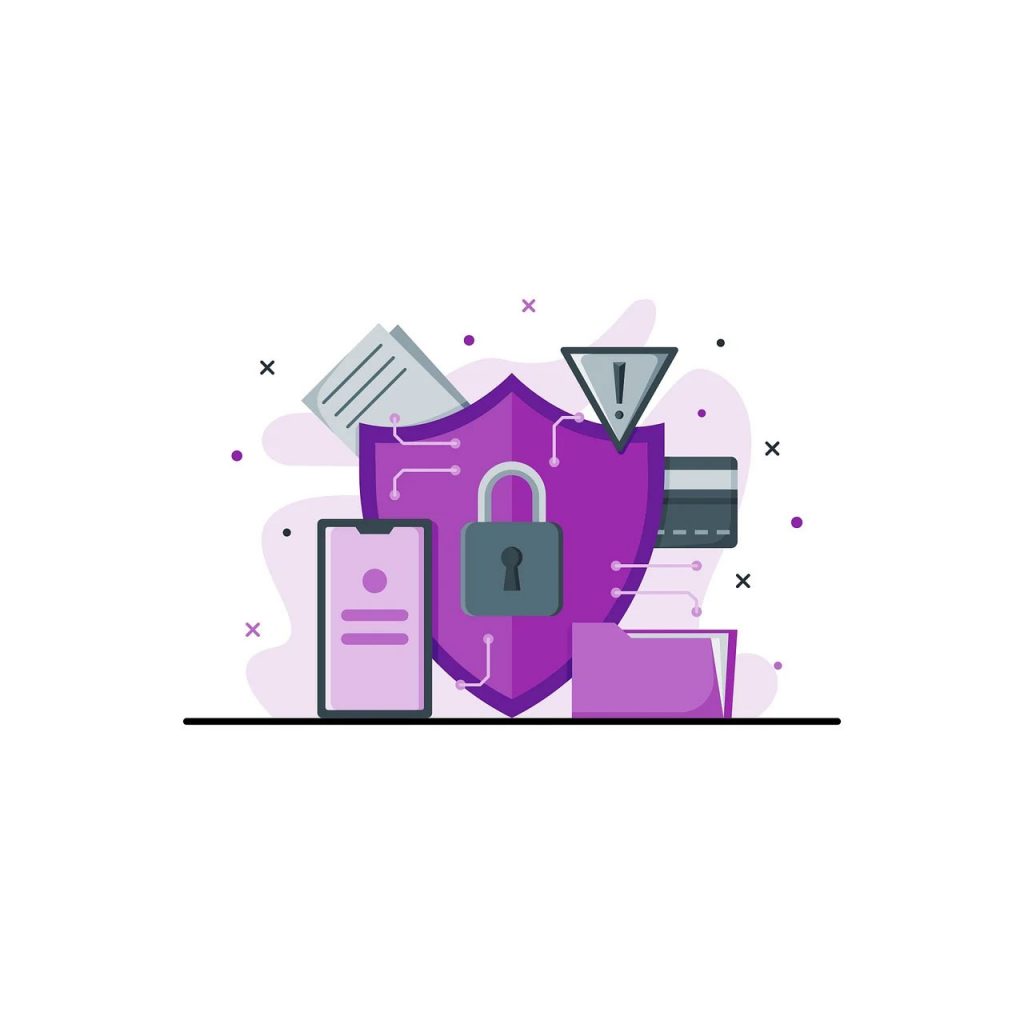
Different types of malware constitute the greatest threat in the digital world. Malware can cause a lot of damage and cost businesses and consumers a lot of money. As technology advances, so do the tactics used by cybercriminals, which keeps IT support teams and cybersecurity experts on their toes. Let’s explore some of the newest and trickiest types of malware.
Malware Threats You Need to Avoid
Cybercrime is a BIG business, and the perpetrators spend a ton of money on R&R (Research & Development), so the malware they produce keeps getting more complex and harder to detect. Here are the newest and trickiest types of malware that you should know about:
Polymorphic Malware
That sounds like a mouthful, but it is proving to be quite a handful to cybersecurity professionals, because polymorphic malware is a type of malware that changes its code every time it replicates, which makes it difficult for antivirus software to zero-in on because it looks different each time. Polymorphic malware uses an encryption key to change its shape and signature, combining a mutation engine with self-propagating code to change its appearance continuously and rapidly morph its code.
Sometimes referred to as a metamorphic virus, even though there are differences, this malware consists of two main parts: an encrypted virus body and a virus decryption routine. The virus body changes its shape, while the decryption routine remains the same and decrypts and encrypts the other part. This makes it easier to detect polymorphic malware compared to metamorphic malware, but it can still quickly evolve into a new version before anti malware detects it.
Hackers use obfuscation techniques to create polymorphic malware. These include:
dead-code insertion
subroutine reordering
register reassignment
instruction substitution
code transposition
code integration
Using these deception techniques makes it harder for antivirus programs to detect the malware. Polymorphic malware has been used in several notable attacks, where it spread rapidly and evaded detection by changing its form frequently. This type of malware is particularly challenging because it requires advanced detection methods beyond traditional signature-based scanning.
Fileless Malware
Another deceptive attack is fileless malware, a malicious software that uses legitimate tools already present in the system rather than planting a new file on the device. Over 70% of malware attacks do not involve any files. It is written directly into the short-term memory (RAM) of the computer. This type of malware exploits the device’s resources to execute malicious activities without leaving a conventional trace on the hard drive.
This type of attack typically starts with a phishing email or other phishing attack, wherein the email contains a malicious link or attachment that appears legitimate but is designed to trick the user into clicking on it. Once the user clicks on the link or opens the attachment, the malware is activated and runs directly in RAM. It often exploits vulnerabilities in software like document readers or browser plugins to get into the device.
Once it enters the device, fileless malware uses trusted operating system administration tools like PowerShell or Windows Management Instrumentation (WMI) to connect to a remote command and control center. From there, it downloads and executes additional malicious scripts, allowing attackers to perform further harmful activities directly within the device’s memory.
Fileless malware can exfiltrate data, sending stolen information to attackers and potentially spreading across the network to access and compromise other devices or servers. This type of malware is particularly dangerous because it’s like a ghost in the machine, operating without leaving any files behind, making it difficult to detect using traditional methods.
This malware in particular is rising in popularity, and cybersecurity experts are hard at work developing the best defenses.
Advanced Ransomware
This common threat continues to evolve. Ransomware is a sophisticated form of malware designed to hold your data hostage by encrypting it. Advanced ransomware now targets not just individual computers but entire networks. It uses strong encryption methods and often steals sensitive data before encrypting it. This adds extra pressure on victims to pay the ransom because their data could be leaked publicly if they don’t comply.
A ransomware attack usually starts with the installation of a ransomware agent on the victim’s computer which encrypts critical files on the computer and any attached file shares. After encryption, the ransomware displays a message explaining what happened and how to pay the attackers. If the victims pay, they are promised a code to unlock their data, but they don’t always get it.
If you make that click and your system encrypts and locks up, do a ‘hard’ shutdown (hold in the power button until it turns off) and alert your IT Support.
This isn’t your father’s ransomware, and these attacks have become more common, with threats targeting various sectors, including healthcare and critical infrastructure. These attacks can cause significant financial losses and disrupt essential services.
Social Engineering Malware
This is a term that keeps popping up, but social engineering malware is basically trickery, fooling people into installing it by pretending to be something safe. It often comes in emails or messages that look real but are actually fake. This type of malware relies on people making mistakes rather than exploiting technical weaknesses.
There is a four-step process to a social engineering attack:
1) Information gathering: cybercriminals gather information about their victims
2) Establishing trust: posing as legitimate individuals
3) Exploitation: exploiting that trust to collect sensitive information
4) Execution: the final goal(s), such as gaining access to online accounts
Rootkit Malware
Although rootkits have some legitimate uses, most are used to open a backdoor on victims’ systems to introduce malicious software or use the system for further network attacks. This malware is a program or collection of malicious software tools that gives attackers remote access to and control over a computer or other system.
By deactivating endpoint antimalware and antivirus software, rootkits attempt to prevent detection. They can be installed during phishing attacks or through social engineering tactics, giving remote cybercriminals administrative access to the system. Once installed, a rootkit can install viruses, ransomware, keyloggers, or other types of malware, and even change system configurations to remain hidden.
Spyware
This is exactly what it sounds like, and even though it is not new, it is vastly improved. Spyware is malicious software designed to enter your computer device, gather data about you, and forward it to a third-party without your knowledge or consent. It can monitor your activities, steal your passwords, and even watch what you type. It often affects network and device performance, slowing down daily user activities.
Spyware infiltrates devices by way of app install packages, malicious websites, or file attachments. It captures data through keystrokes, screen captures, and other tracking codes, then sends the stolen data to the spyware author. The information gathered can include login credentials, credit card numbers, and browsing habits.
Trojan Malware
This has been around in some form or another for a very long time. It’s a sneaky type of malware that infiltrates devices by camouflaging itself as a harmless program, much like the giant wooden horse of mythology that was gifted to Troy by the Greeks, but with soldiers hidden inside.
Trojans are hard to detect, even if you’re extra careful. They don’t self-replicate, so most Trojan attacks start with tricking the user into downloading, installing, and executing the malware.
This malware can delete files, install additional malware, modify data, copy data, disrupt device performance, steal personal information, and send messages from your email or phone number. They often spread through phishing scams.
Frequently Asked Questions
What is the most harmful malware?
Ransomware is often considered the most dangerous type of malware because of its prevalence, and it can cause significant damage to individuals, businesses, and even governments.
What are the top 3 malware?
Lumifi Cyber identifies these as the Top 5:
1: Remote Access Trojans (RATs) Remote Access Trojans (RATs) are malicious executables that give attackers control over their target's devices.
2: Identity-based malware and infostealers.
3: IAT (Import Address Table) malware.
4: Multi-extortion ransomware.
5: Fileless malware.
What kills malware?
Most good antivirus (AV) software have quarantine and deletion features for easy malware removal.
What is the best AV 2025?
While the ‘best’ is subjective, multiple reviews suggest that ‘Norton 360 with LifeLock’ is the best, or at least a top contender. It consistently receives high marks for its comprehensive protection, features, and user-friendly interface. Other top contenders include Bitdefender, TotalAV, and McAfee, each offering unique strengths.
How secure is your network?
As a reputable member of the IT Support Los Angeles community since 2002, IT Support LA offers a FREE, no-risk network and cybersecurity assessment. It is a non-intrusive scan that allows us to deliver a comprehensive report that is yours to keep. No strings, and no obligation to ever use our Managed IT Services.
The best defenses are expert cybersecurity to protect your data from theft, and a top-notch Managed Services Provider (MSP) to ensure continued reliability and defenses against newly emerging threats.
With our 100% Money Back Guarantee in writing, we offer a risk-free way for prospective clients to try us out. Because we do not require a ‘hard’ contract, our clients can fire us at any time with 30 days’ notice. We have to be good.
Among the Managed IT services we provide:
IT HelpDesk Service
Onsite IT Support
Cybersecurity
Cloud migration and management
Email migration services
Backup and disaster recovery
VoIP phone systems
IT disposition and recycling
Office moves
White label services (IT to IT)
IT Support LA is an award-winning Managed Services Provider (MSP):
o 3 Years awarded Best IT by the Small Business Expo
o Awarded 2nd best company of any type in the US by the Small Business Expo SB100
o Awarded Best IT Support in California by Channel Futures
o Winner of Best IT in Los Angeles by Channel Futures
o Listed as one of the world’s Top 501 MSPs by CRN and in the top 250 in the ‘Pioneer’ listing
o 4 years listed as one of the Top 501 MSPs in the World by Channel Futures
o Listed as #21 MSP in the World in Channel Futures NextGen 101
o Globee 2021 Bronze Award winner for Chief Technology Officer of the Year
o Globee 2022 Gold Award winner for Chief Technology Officer of the Year
o Named one of 2022’s 50 ‘Best’ businesses in California by UpCity
o Named Best of IT winner by UpCity
o Winner of Local Excellence Award for 2021, 2022 and 2023 by UpCity
o Named Best of Cloud Consulting winner by UpCity
o Certified as Top Managed Services Providers and Cybersecurity Pro by UpCity
o Named Best IT in Los Angeles by Expertise.com.
Want Help Protecting Yourself from Malware?
Call IT Support LA today. Protecting yourself from malware requires using the right technology and being aware of the risks. By staying informed and proactive, you can significantly reduce the risk of malware infections. If you need help safeguarding your digital world, contact us today for expert advice and also take advantage of our FREE no-risk network and cybersecurity assessment.
818-805-0909


